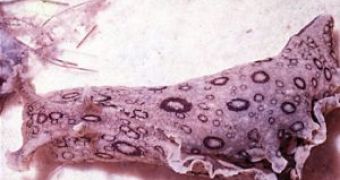The sea slug, with its coating more colorful than a gypsy wearing, seems nothing more than just a worm.
But at any given time within a single brain cell of the marine slugs (Aplysia), which are some kind of unshelled snails, more than 10,000 genes are hard at work.
In a new study, American researchers identified in the Aplysia's brain more than 100 genes similar to those associated with major human neurological diseases and more than 600 genes behind brain development.
Learning or the development of brain disorders seem to be connected, but they are the result of interactions between large clusters of genes within many cells.
How genes shape circuits in the brain to enhance learning and memory has been till now largely a mysterious process.
"This improves the genetic data that is available on Aplysia by several orders of magnitude," said study team member Eric Kandel of Columbia University in New York.
The marine slug possesses a relatively simple nervous system, formed by about 10,000 large neurons that can be easily identified, fact that eases neuronal studies, compared with about 100 billion neurons in humans.
But don't be fooled by the apparent simplicity of this system: the animal can learn and its neurons are interconnected in the same way human neurons are linked: thousands of strands (synapses) that connect to other neurons and a signal must run along the correct strands and intersections.
Similarly, to store a memory, a synapse must be strengthened.
Previous studies found that once the route-map gets made, the sea slug marks the synapses connecting the relevant neurons and the next time the slug gets pinched, a certain protein is sent out to all the synapses in a neuron.
When it reaches a marked synapse, it triggers other molecules there to produce new proteins that strengthen the neuron-to-neuron connection.
To locate the genes behind learning and memory, the team investigated gene activity in the sea slug's central nervous system, including those activating/deactivating simple defensive maneuver (e.g. when the slug withdraws its gill).
"We've now identified a whole bunch of receptors for serotonin. So we can see what their function is in various cells and which ones participate in the learning process," said Kandel.
They found 104 counterpart genes in Aplysia to the 146 genes implicated in 168 neurological disorders, suggesting the sea slugs could be useful in understanding and ultimately treating neurodegenerative diseases.

 14 DAY TRIAL //
14 DAY TRIAL //